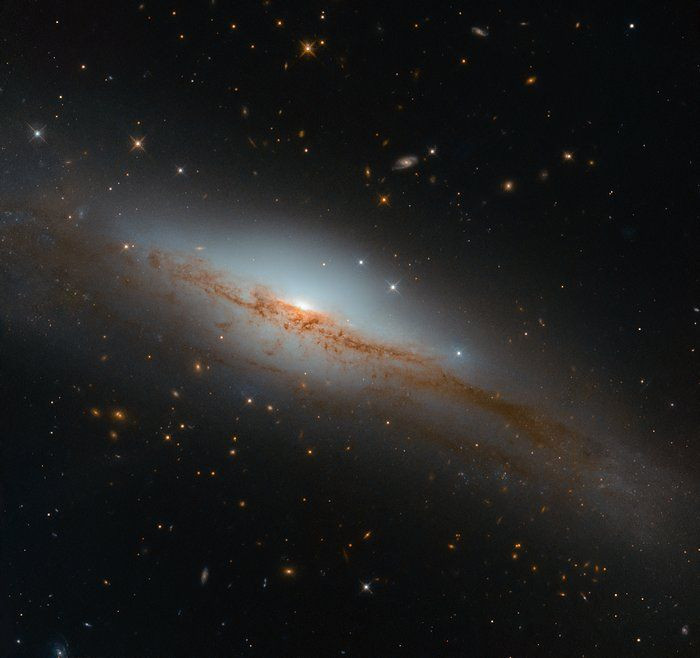NASA's Hubble Snaps Galaxy That Could Be Rich In Star-Forming Regions

The Hubble Space Telescope managed by NASA and the European Space Agency (ESA) was able to photograph a stunning photo of a distant galaxy with powerful emission lines. The appearance of the strong emissions suggests that the galaxy is bursting with stellar formations and young stars.
The latest galaxy captured by the space telescope has been identified as NGC 3749, which is located in the Centaurus constellation and lies about 135 million light-years from Earth’s neighborhood.
Although NGC 3749 looks like a standard galaxy photographed from its side in Hubble’s image, the ESA noted that it is actually an emission line galaxy. This means that within a spectrum of light, the galaxy emits traces of various elements.
The ESA explained that depending on the condition of a galaxy, it could either display emission lines or absorption lines. As the opposite of emission lines, absorption lines appear as the galaxy absorbs elements.
According to the agency, the appearance of either of these lines could provide astronomers with an idea of a galaxy’s conditions. It could even reveal how massive the galaxy’s central black hole is.
“If a galaxy’s spectrum shows many absorption lines and few emission lines, this suggests that its star-forming material has been depleted and that its stars are mainly old, while the opposite suggests it might be bursting with star formation and energetic stellar newborns,” the ESA stated.
“This technique known as spectroscopy, can tell us about a galaxy’s type and composition, the density and temperature of any emitting gas, the star formation rate, or how massive the galaxy’s central black hole might be,” the agency added.
According to the ESA, NGC 3749 displays strong emission lines, which suggests that the galaxy is rich in regions filled with star formations and stellar nurseries. In addition, the agency stated that NGC 3749 maintains a steady luminosity.
“While not all galaxies display strong emission lines, NGC 3749 does! It lies over 135 million light-years away, and is moderately luminous,” the ESA explained. “The galaxy has been used a 'control' in studies of especially active and luminous galaxies.”
© Copyright IBTimes 2025. All rights reserved.





















